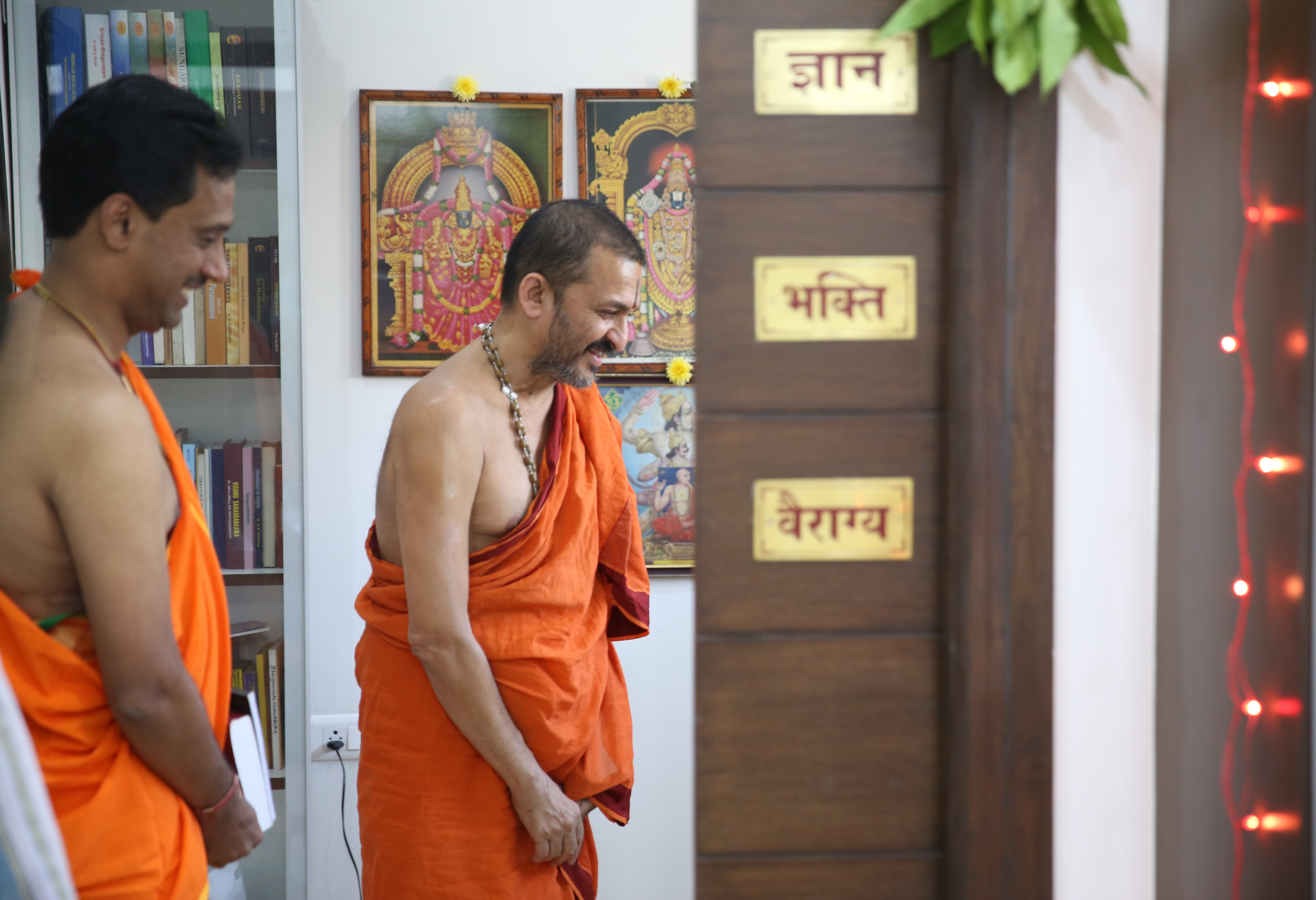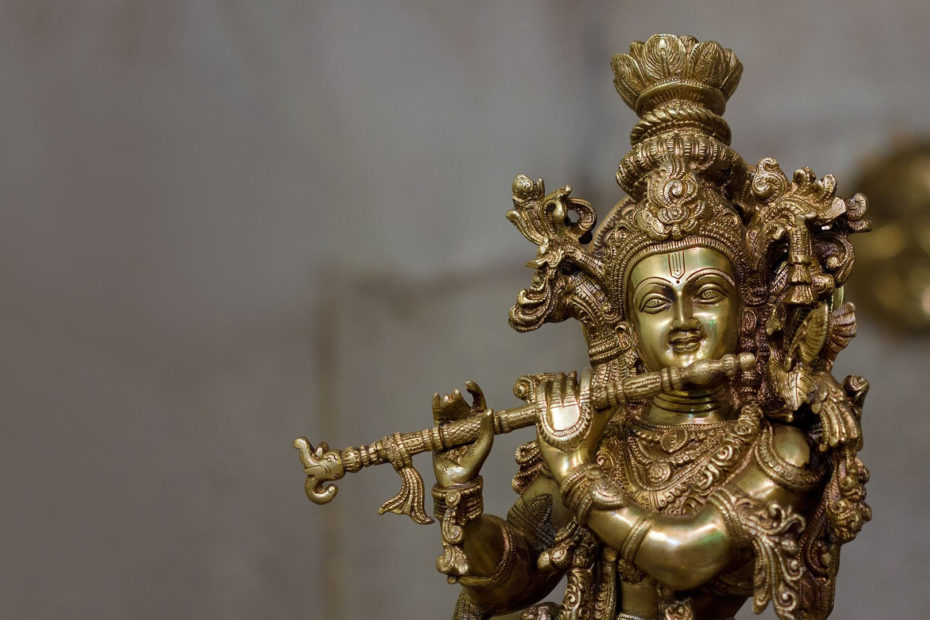- Anugraha : His Holiness Shri Shri Vidyadheesha Teertha Swamiji
- Author : Krishna Sakha, Mudarangadi
- Translator : Dr || Sudheendra Putty, Secunderabad
Balarama is not Lord Vishnu
The Supreme Lord is to descend on the earth as Krishna, the son of Vasudeva. Lord Brahma opined that the thousand-headed sesha (serpent) who was an amsha of the Supreme Lord also appear on the earth as His elder brother to serve Him.
vāsudēvakalānantaḥ sahasravadanaḥ svarāṭ |
agratō bhavitā dēvō harēḥ priyacikīrṣayā ||
The question that arises here is whether Balarama (an incarnation of sesha and regarded as an aspect of the Supreme Lord) is the Supreme Lord Himself or distinct from Him. A superficial reading of the above averments give the impression that the incarnation of the thousand-headed serpent, Balarama, is indeed an aspect of the Supreme Lord. As the power or strength of the Almighty is not distinct from Him, it may appear that the Bhagawatam alludes to sesha, also called Ananta, as another facet of the Supreme God.
Many philosophers have concluded Balarama to be an incarnation of the Supreme Lord. They have also included Balarama as one of the ten incarnations of Narayana. While some have replaced Krishna with Balrama, some others have ensconced him in place of Buddha. Before determining whether or not Balarama is an incarnation of the Supreme God, it would be appropriate to comprehend Balarama’s genesis or source. On the basis of the averments of Shri Vedavyasa, Acharya Madhwa provides us with answers.
For a discerning seeker whose ultimate aim is liberation from the cycle of births and deaths, it is as important to have the right knowledge of His incarnations as it is to be cognizant of those that are not His incarnations. Acharya Madhwa cautions that if a person believes someone to be an incarnation of the Supreme Lord when he actually is not, such a person cannot achieve liberation.
Avatārān harērjñātvā nāvatārā harēśca yē |
tadāvēśānstathā samyagjñātvā muktirna cān’yathā ||
Sesha who emerged out of the womb of Rohini had a special presence of an aspect of Shukla kesha (white hair) of the Lord; however, he was not an incarnation of the Supreme Lord, Narayana. With the backdrop of an ancient treatise titled Tattvanirnaya, Acharya Madhwa sheds light on this aspect in his Bhagavata Tatparya Nirnaya.
Pradyumnē cānirud’dhē ca”baladēvē ca kēśavaḥ |
sannidhānaṁ viśēṣēṇa” karōti jagatāṁ patiḥ ||
Krishna’s son Pradyumna, Pradyumna’s son Aniruddha and Balarama – the three of them have the presence of an aspect of Shri Hari; the inference being that each of them had the presence of the Supreme Lord but were not His incarnations.
Viewed in the backdrop of these inferences, the vāsudēvakalānanta utterance of Veda Vyasa must not be erroneously understood to mean that Vasudeva Himself descended as Balarama. Rather, it must be comprehended that within Balarama was comprised a special and unique presence of Vasudeva (in the form of the personification of the white hair). Our worship also needs to be in sync with this cognition. Any understanding other than this will be contrarian and cause hurdles in the path of liberation. Thus, to include Balarama, who, in reality is an incarnation of sesha, as one of the incarnations of Narayana is against the scriptures.
Even on a material plane, imagine the consequences of treating a master and his servant in a similar manner! The consequences of treating the Almighty (Krishna) and his savant (Balarama) on par will be even more disastrous and dangerous.
Hence, it is essential to be ever cognizant of Krishna being the Almighty Supreme Lord and Balarama, His savant. This alone is the right and apt understanding of Krishna.

Ever engaged in the sadhana of Srimadvaishnava Siddhanta of our Guru, Acharya Madhwa and all the Yatis and Dasas who have blazed this noble path. May HVG bless us all
